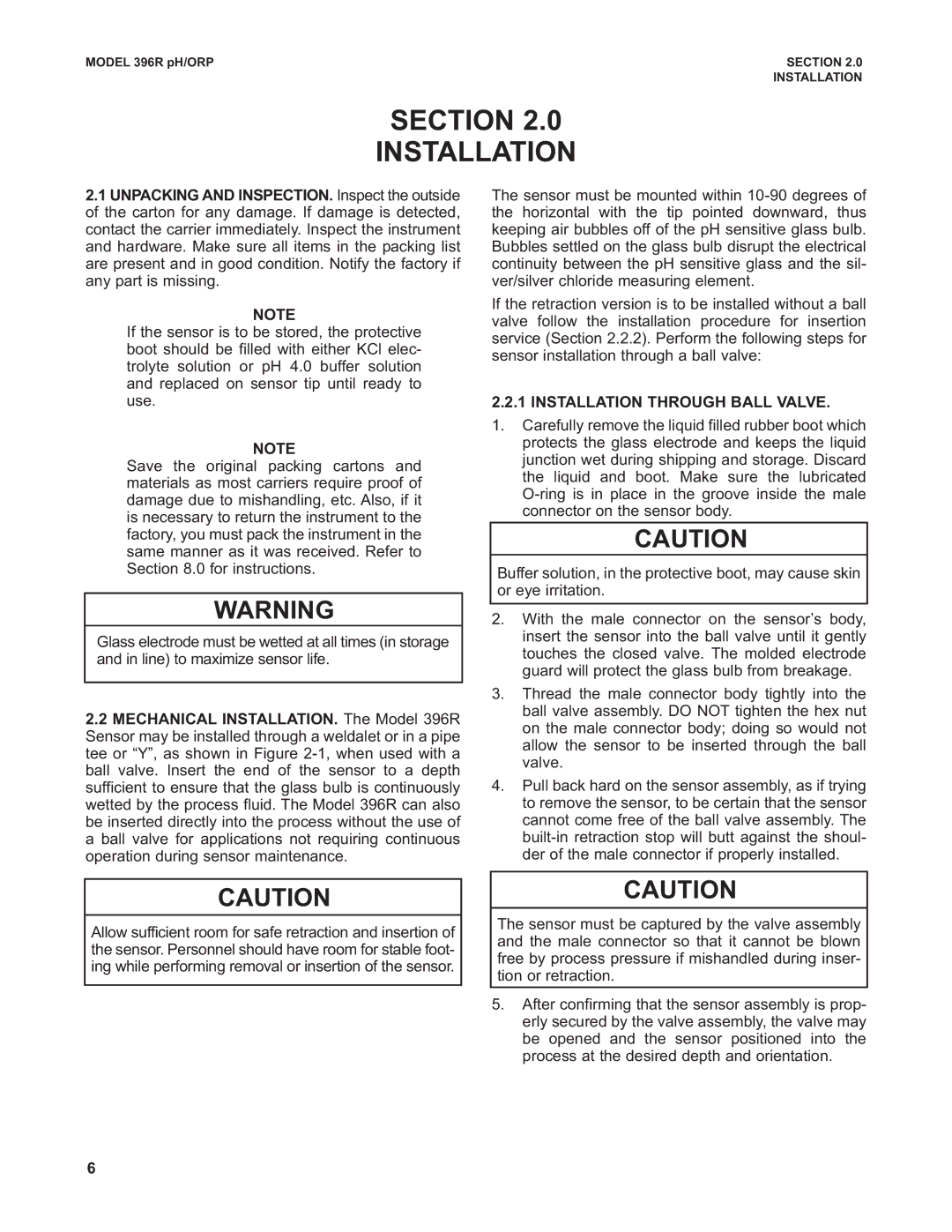
MODEL 396R pH/ORP | SECTION 2.0 |
| INSTALLATION |
SECTION 2.0
INSTALLATION
2.1UNPACKING AND INSPECTION. Inspect the outside of the carton for any damage. If damage is detected, contact the carrier immediately. Inspect the instrument and hardware. Make sure all items in the packing list are present and in good condition. Notify the factory if any part is missing.
NOTE
If the sensor is to be stored, the protective boot should be filled with either KCl elec- trolyte solution or pH 4.0 buffer solution and replaced on sensor tip until ready to use.
NOTE
Save the original packing cartons and materials as most carriers require proof of damage due to mishandling, etc. Also, if it is necessary to return the instrument to the factory, you must pack the instrument in the same manner as it was received. Refer to Section 8.0 for instructions.
WARNING
Glass electrode must be wetted at all times (in storage and in line) to maximize sensor life.
2.2MECHANICAL INSTALLATION. The Model 396R Sensor may be installed through a weldalet or in a pipe tee or “Y”, as shown in Figure
CAUTION
Allow sufficient room for safe retraction and insertion of the sensor. Personnel should have room for stable foot- ing while performing removal or insertion of the sensor.
The sensor must be mounted within
If the retraction version is to be installed without a ball valve follow the installation procedure for insertion service (Section 2.2.2). Perform the following steps for sensor installation through a ball valve:
2.2.1 INSTALLATION THROUGH BALL VALVE.
1.Carefully remove the liquid filled rubber boot which protects the glass electrode and keeps the liquid junction wet during shipping and storage. Discard the liquid and boot. Make sure the lubricated
CAUTION
Buffer solution, in the protective boot, may cause skin or eye irritation.
2.With the male connector on the sensor’s body, insert the sensor into the ball valve until it gently touches the closed valve. The molded electrode guard will protect the glass bulb from breakage.
3.Thread the male connector body tightly into the ball valve assembly. DO NOT tighten the hex nut on the male connector body; doing so would not allow the sensor to be inserted through the ball valve.
4.Pull back hard on the sensor assembly, as if trying to remove the sensor, to be certain that the sensor cannot come free of the ball valve assembly. The
CAUTION
The sensor must be captured by the valve assembly and the male connector so that it cannot be blown free by process pressure if mishandled during inser- tion or retraction.
5.After confirming that the sensor assembly is prop- erly secured by the valve assembly, the valve may be opened and the sensor positioned into the process at the desired depth and orientation.
6
